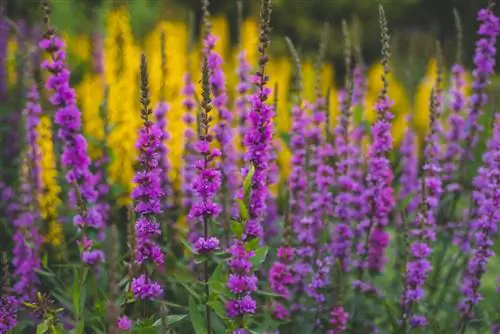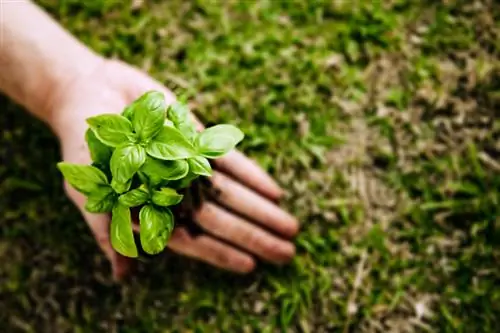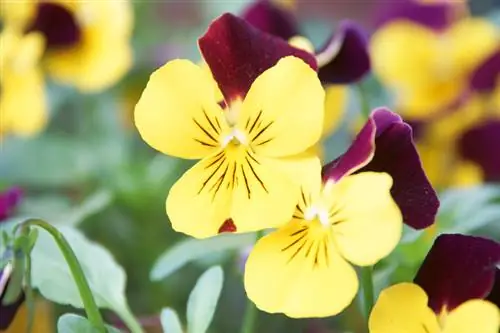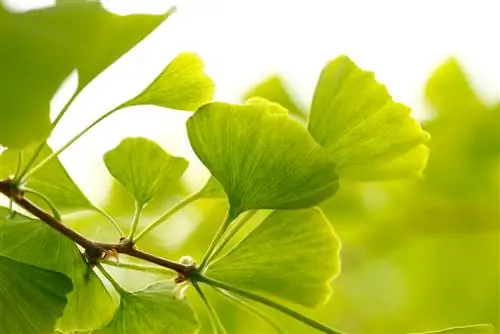- Author admin [email protected].
- Public 2023-12-16 16:46.
- Last modified 2025-01-23 11:22.
What color does loosestrife actually bloom, how long does the bloom last and in which location does it feel most comfortable? Would you know the answers? After you have studied our profile, these questions will no longer be a problem for you. Here you can find out everything about care and other interesting facts about the perennial. We have put together informative features in a clear manner.

What does loosestrife look like and what location preferences does it have?
The purple loosestrife (Lythrum salicaria) blooms in purple-red with a bluish-red shimmering crown from June to September. It prefers sunny locations and tolerates partial shade, grows in humus-rich, nutrient-rich and moist substrate and is hardy and non-toxic.
General
- Latin name: Lythrum salicaria
- Synonyms: common loosestrife, common loosestrife
- Origin: native
- Plant family: Loosestrife family (Lythraceae)
- Special feature: tolerates waterlogging, reproduces rapidly through birds and the wind (asexual reproduction)
- multiple species?: over 40 varieties
- hardy?: yes
- poisonous?: no (no risk of confusion with similar-looking poisonous plants)
Occurrences
Would you have thought that purple loosestrife, in contrast to most plants, is considered a neophyte in North America? The perennial is native to Europe, Asia and the Australian continent.
Usage
- as bank greening
- as a pond plant (in shallow water, up to 20 cm deep)
- growing wild in moors, on beaches or in wet meadows
- Insect pasture
- formerly often used for medical purposes
Lighting conditions at the location
- sunny
- Penal shade is tolerated
Substrate
- humos
- nutrient-rich
- sandy
- moist to wet soil
Optical features
Growth habit
- Growth height: 40 cm to 200 cm
- Growth habit: herbaceous
Bloom
- Flower color: purple-red with a bluish-red shimmering crown
- Flowering period: June to September (some varieties only until August)
- Shape: candle-shaped with 5 to 6 petals, double-toothed axis cup
Note: Did you know that purple loosestrife has three different types of flowers? It has flowers with long styles and short stamens, flowers with medium-length styles and short stamens and a third type with short styles and long to medium-length stamens. In botany this phenomenon is referred to as trimorphic heterostyly. In addition, the pollen color of the individual species also differs. Some are green and large, others yellow and slightly smaller.
leaves
- Shape: narrow to egg-shaped, heart-shaped, sometimes also round
- Arrangement: opposite, whorled or alternate depending on the species
- hairy
- Color: green
Fruit
- Type: Capsule fruits
- Shape: egg-shaped
- Size: 3 to 4 mm






